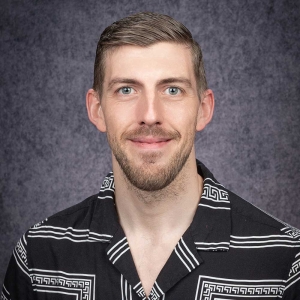$12,379.35; The Bender Scientific Fund of The Community Foundation for the Greater Capital Region
Zinc Sulfide Quantum Dot Sensors to Detect Heavy Metal Pollutants in Water
Principal Investigator: Christopher Whitehead, assistant professor of chemistry
Though substantial efforts have been made to remove toxic heavy metals from abandoned mines industrial facilities, and superfund sites, heavy metals continue to leech into waterways across the United States. Currently, standard methods of heavy metal detection require transport of samples to laboratory facilities and expensive instrumentation. PI Whitehead will lead efforts to address the immediate need for a low-cost, environmentally friendly technology that can detect and remediate heavy metal pollution and be applied to both waterways and contaminated sites.
Quantum dots (QDs), semiconducting nanocrystals between 1-10 nm with tunable band gap (emission color), have current applications in solar cells, light emitting diodes (LEDs), and medicine. Due to their optical properties, QDs have demonstrated potential to detect the presence of environmental pollutants. While the first generation of QDs were prepared using heavy metals (e.g. cadmium, mercury, and lead), the next generation can be prepared using environmentally friendly, earth-abundant non-toxic elements. PI Whitehead will develop and build a QD system based around zinc sulfide (ZnS) as a sensor for detecting heavy metals in Capital Region waterways. These sensors will be embedded into paper substrates, a low-cost, flexible material and these sensors, when exposed to UV light, will emit light in the visible region of the light spectrum. The presence of a heavy metal (e.g., cadmium, mercury, and lead) will quench this emission. The proposed QD device can be easily transported and used on-site to determine the presence of heavy metal pollution, enabling a more systematic sample collection and providing immediate feedback regarding the extent of the pollution in a given area.
This project will provide undergraduate Union students an opportunity to do hands-on research in the growing field of nanotechnology and learn advanced scientific techniques. They will be involved in this research through summer experiences, research practicums, and senior theses. This interdisciplinary research foundation will better prepare them for future jobs or graduate programs in STEM. Findings from this research will position PI Whitehead to apply for major, national research grants.

